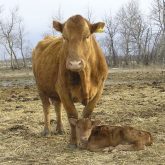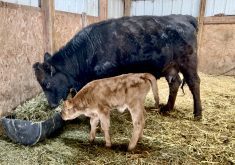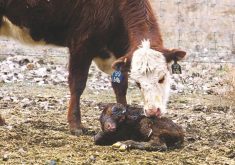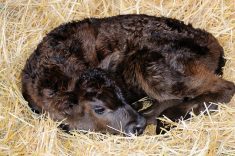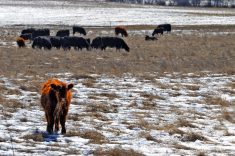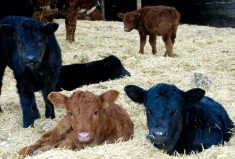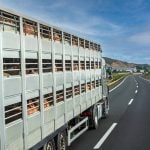Most experienced cattlemen will have had an increased incidence in one of the three main calf diseases we see on ranches across Western Canada.
These can be smouldering problems and occur year after year. I have spent many a time over my career discussing treatment of scours, pneumonia or navel infection (and then, ideally, working on a preventive strategy).
Initially it might start with isolation methods for the specific bug and then, if there is more than one case, determining the source of infection. During an on-farm visit, a veterinarian might look at everything from nutrition and body condition score to the vigour of sucking in calves. With these three diseases there are many common denominators, such as whether calves are getting enough colostrum.
Read Also

Mosquito-borne virus could be devastating to sheep breeding operations
Cache Valley virus, a mosquito-borne disease that infects small ruminants, could be a devastating hit to small operations.
I know you have heard this many times but if in doubt, tube calves with colostrum. Most producers have a case of the dried commercial colostrum on hand to at least supplement twins, hard pulls, calves on cows with bad udders, and delayed calving breech births. You can either milk the mother or use the good-quality colostrum supplements such as HeadStart. Generally better-quality products cost more but provide more immunoglobulins.
Not getting enough colostrum may lead to the first case of the three main calfhood diseases. If not isolated the first case may lead to 10 cases (especially when it comes to scours).
If you are having repeat cases, I think it wise to have your veterinarian visit and walk through what happens leading up to calving, where the calving grounds are, and how the pairs are kept until rejoining the larger group. It is in this interim period where we get these diseases starting.
Of course those calving later in May on grass eliminate some of the biosecurity or stress issues that happen from calving in winter or during the wet spring. Freak rainstorms can occur but weather is a little more in our favour.
Biosecurity for these diseases takes on many faces — from vaccination of the cows for scours prevention to using respiratory (mainly intranasal) vaccines for pneumonia given in the first few days after birth. Vaccination can be one of the best forms of biosecurity and although it won’t eliminate all scours or pneumonia cases, it will prevent some and decrease the severity of others. I would not go without either of these preventive programs and the larger the number of cows, the more critical prevention becomes.
Other biosecurity measures include starting with a clean calving ground (preferably one cleaned from the previous year and left to desiccate in the sun), using boot dips where appropriate, and cleaning and disinfecting calf carts or sleds, calf pullers, calving equipment, and maternity pens.
I am a real believer in lots of bedding as well as creep sheds where the newborn calves can avoid the cold and stressors of adult cattle. We know calves love these creep areas (as anyone who has gone looking for them during a snowstorm knows) and are conducive to avoiding disease transmission.
It is always important to not allow the calving barn temperature to get too high. Just above freezing (essentially fridge temperature if possible) will not allow infectious organisms to multiply in the environment. Totally cleaning the pen daily may not be as good as adding lots of bedding and getting a bedding pack started. Experiment with different bedding materials and see what works best for your operation.
With navel infection, think about what the navel is touching right after birth. I am not a huge fan of handling or spraying navels (I used to have more trouble with producers using an irritating product and doing more harm than good). Backwards calves are more prone to navel infection because the umbilicus rips off very close to the body and that goes for C-sections as well.
Reducing incidence of these diseases requires investigative veterinary medicine. Often there is not one easy solution but several little improvements could decrease the clinical cases, and that is essentially our goal.
Spending time and potentially some money may eliminate future cases or minimize treatment costs by reducing the need for things such as antibiotics, NSAIDs or electrolytes. We will never get rid of every case but our goal should be to substantially reduce them.
If we do need to treat, the quicker we identify cases, the quicker the response will be. I like checking calves in the early morning when they look their worst. It can make it easier to catch cases and impose isolation (if needed) earlier. Some producers have even welded a handle to the end of their calf catcher leg hook to facilitate catching and treating immediately on identification (especially for scours ).
Here’s to a healthy calving season.




